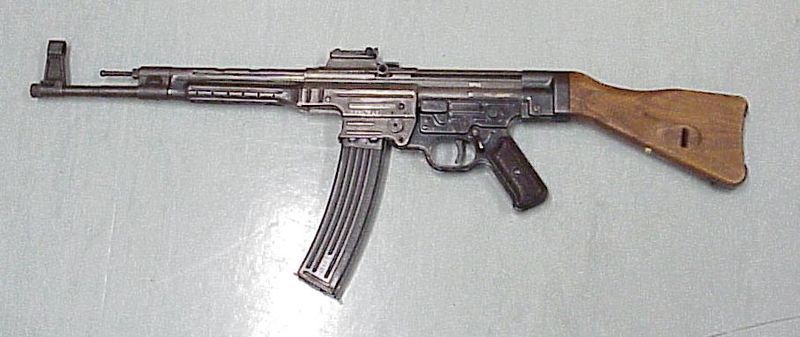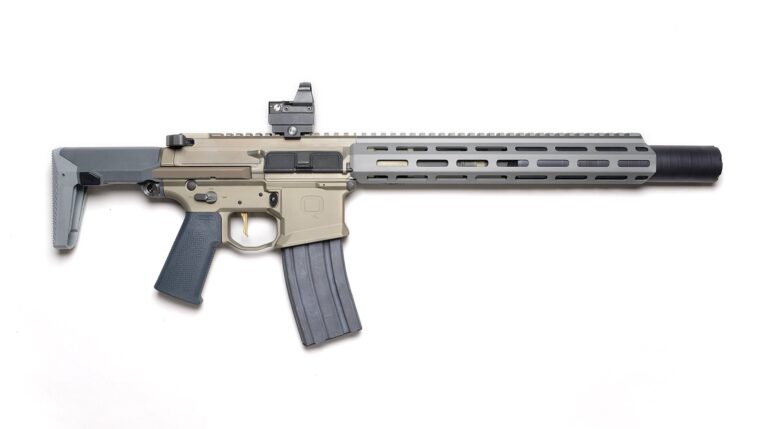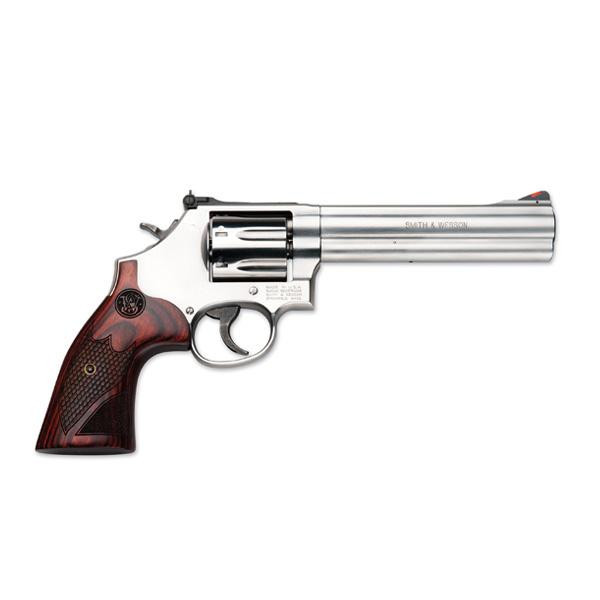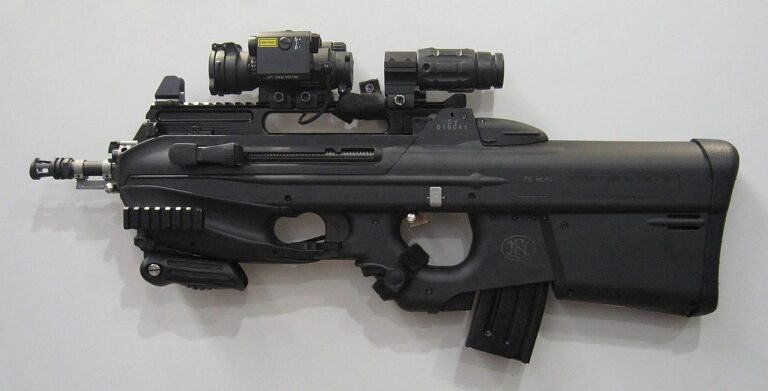Introduction
The Sturmgewehr 44 (StG 44), literally “assault rifle 44”, is a revolutionary weapon developed by Nazi Germany during the Second World War. It is considered the first true assault rifle in history, combining the power of a rifle with the rate of fire of a machine pistol. Its influence was immense: the concept it inaugurated would serve as the basis for the development of modern weapons such as the AK-47 or the M16.
Designed to meet the realities of modern combat, where the majority of confrontations take place at medium range, the StG 44 marks a major technological breakthrough in the history of military weaponry.
Creation context
Prior to StG 44, the German arsenal was based mainly on :
The Karabiner 98k, a powerful but slow bolt-action rifle.
The MP40, a sub-machine gun effective in close combat but limited in range.
Soldiers were therefore either over-armed for short engagements, or under-armed for intermediate-range shooting. The idea of an automatic rifle chambered in intermediate ammunition emerged as early as the late 1930s, but the upper echelons of the Nazi regime were slow to embrace it.
It was under the code name MP 43, then MP 44, that the project was discreetly launched, to circumvent Hitler’s prohibitions, who saw this type of weapon as a waste of resources. It wasn’t until 1944, after seeing the weapon’s effectiveness on the Eastern Front, that the dictator gave his approval, and the name Sturmgewehr 44 was officially adopted for propaganda purposes.
Technical specifications
| Element | Detail |
|---|---|
| Caliber | 7.92×33 mm Kurz |
| Capacity | 30 shots |
| Length | 940 mm |
| Barrel length | 419 mm |
| Weight (loaded) | 5.2 kg |
| Firing rate | 500 to 600 shots/min |
| Shooting selector | Single shot / automatic |
| Mechanism | Gas borrowing, rotary cylinder head |
Design and ergonomics
The StG 44 introduces several fundamental innovations:
Intermediate ammunition: the 7.92×33 mm Kurz is less powerful than the 7.92 Mauser, but much more controllable in automatic fire, with an effective range of around 300-400 meters.
Detachable 30-shot magazine: good capacity for prolonged combat.
Firing selector: switches between semi-automatic and automatic firing.
Advanced ergonomics: pistol grip, adjustable sight, metal handguard, stable wooden stock.
The StG 44 is robust, but still heavy and costly to produce compared with contemporary weapons. However, its combat effectiveness was demonstrated from its very first use.
Use during the Second World War
The StG 44 was deployed mainly on the Eastern Front from 1943-1944, including :
By elite Wehrmacht and Waffen-SS units
In wooded and urban environments, where cadence and reach make all the difference
Despite its technical superiority, production remained limited: around 425,000 units were produced, well below the needs of the German army. The damaged industrial infrastructure and late strategic choices limited its distribution.
Heritage and influence
The StG 44 didn’t have time to influence the course of the war, but it did lay the foundations for the modern assault rifle. Several weapons were directly inspired by its design:
AK-47: although mechanically different, the concept is directly influenced by the StG 44.
Modern rifles (FAMAS, M16, G36): all adopt the idea of intermediate ammunition + selective fire.
After the war, stocks of StG 44s were reused in various conflicts, notably in the Middle East and Africa, until the 1970s.
Comparison with other weapons
| Model | Caliber | Main features |
|---|---|---|
| StG 44 | 7.92×33 mm Kurz | First modern assault rifle |
| AK-47 | 7.62×39 mm | StG-inspired, simplified mechanism |
| M16A1 | 5.56×45 mm | Light, precise, very modern |
The StG 44 represents a technological tipping point: a multi-purpose weapon capable of replacing rifles, submachine guns and carbines.
Collection and current status
Today, the StG 44 is a highly sought-after collector’s item:
Rarity: only a few examples are still functional.
Historical value: first model in a new category.
Sport shooting: modern semi-automatic replicas are available in some countries.
It is also one of the most emblematic museum exhibitions of 20thᵉ century weaponry.
Conclusion
The StG 44 is much more than a rifle used in 1944: it is the precursor of the modern assault rifle. Combining maneuverability, controlled power and a useful rate of fire, it represented a turning point in military doctrine. Little deployed in time to change the course of the war, it nevertheless shaped the military weaponry of the following decades.
A symbol of German tactical innovation, the StG 44 is both a war relic and a cornerstone in the history of automatic weapons.









